PinoyThaiyo online will run a series of articles in preparation for the Coronation of His Majesty King Rama X.
The Five Roral Regalia are considered the most important symbols of Kingship presented to the new King during the Coronation Ceremony.
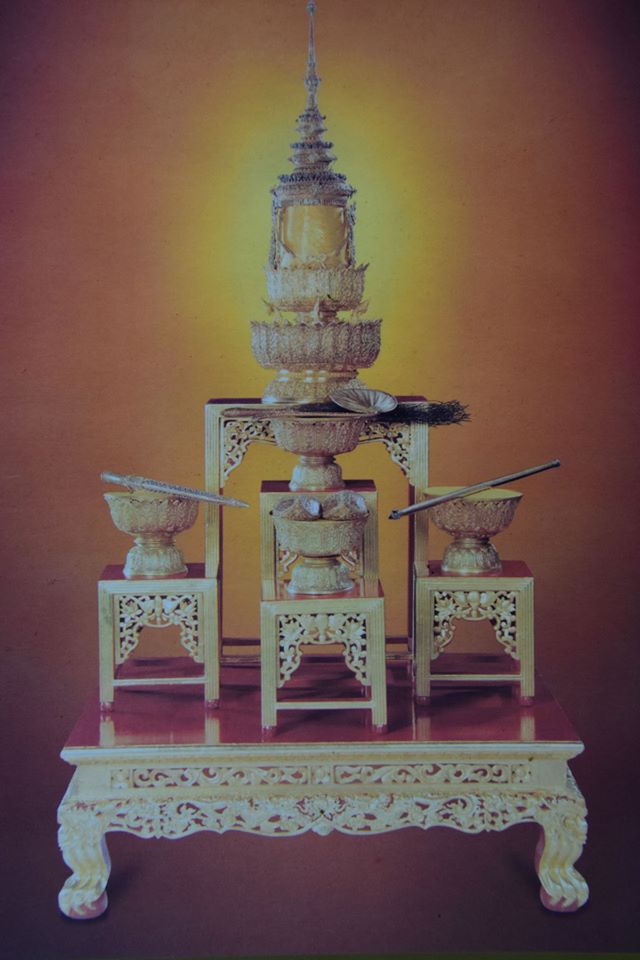
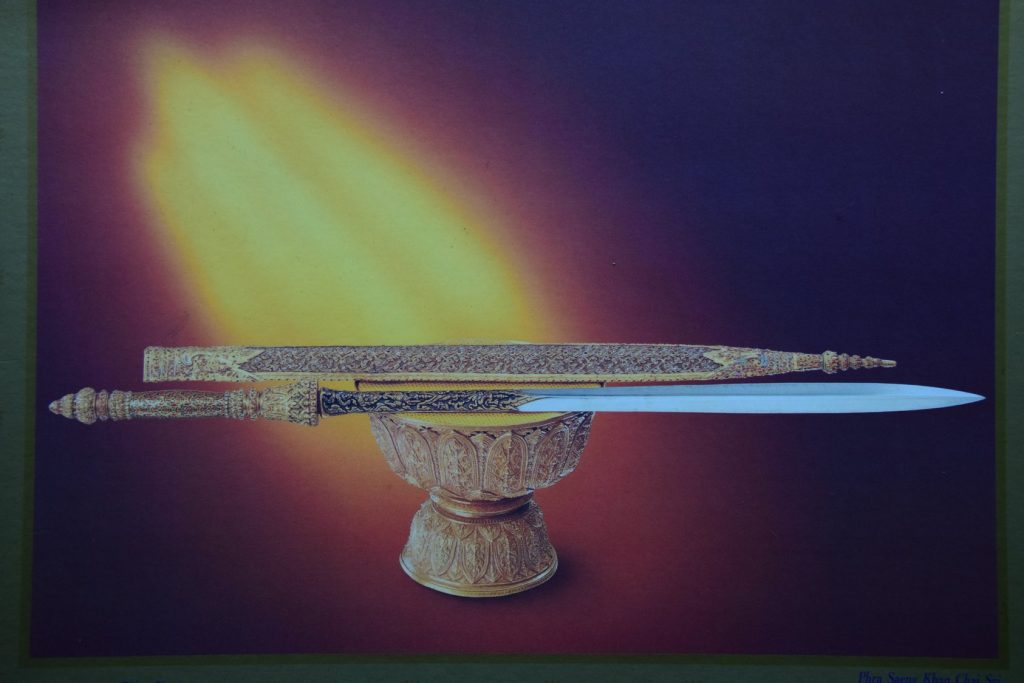
The Royal Sword of Victory (Phra Saeng Khan Chaisi)
Weapon of the king. Phra Khan or the sword means wisdom in governing the country. The story has been told that the sword was found at the very bottom of the Khmer lake in Siem Riep Town by a fisherman in 2327 AD. Chao Phraya Uthai Pubet, the ruler of Siem Riep cordially presented this to King Rama I. By the time the sword arrived Bangkok, seven flashes of lightning stroke seven places in the city at Wiset Chaisi and Piman Chaisri. This is why names of both entrances of the Grand Palace ended with the word Chaisri as the name of the Royal Sword.

The Royal Fan and Fly Whisk or “Walawichani”
The “Walawichani” was made during the reign of His Majesty King Buddha Yod Fa Chulalok (Rama I). The fan was made of a palm leaf hence called the palm-leaf fan. The rim of the fan was trimmed with gold and the rod was made of enameled gold. Originally it was called “Phatchani Fak Markham” or the “Fan in the shape of a tamarind-pod.” The meaning of its name was reconsidered by His Majesty King Mongkut (Rama IV) who recognized that the name “Walawichani,” was taken from the Pali language, although use of a palm leaf fan may not be the correct interpretation. It referred more to a whisk-like item, made from the hair of a yak, as the word “Wala” meant the hair of one type of a cow, an animal that Thais called “Chammari.” Hence, His Majesty King Rama IV ordered a fly whisk to be made with the hair of a yak and to be included in the Royal Regalia. In a later period, yak hair was replaced with the hair from the white elephant’s tail, and the name was changed to White Elephant Fly Whisk. But as it would be deemed inappropriate not to use the original royal Palm-Leaf Fan, His Majesty ordered the use of both the Palm-Leaf Fan and the “Chammari Fly Whisk,” and together had them called the “Walawichani.”
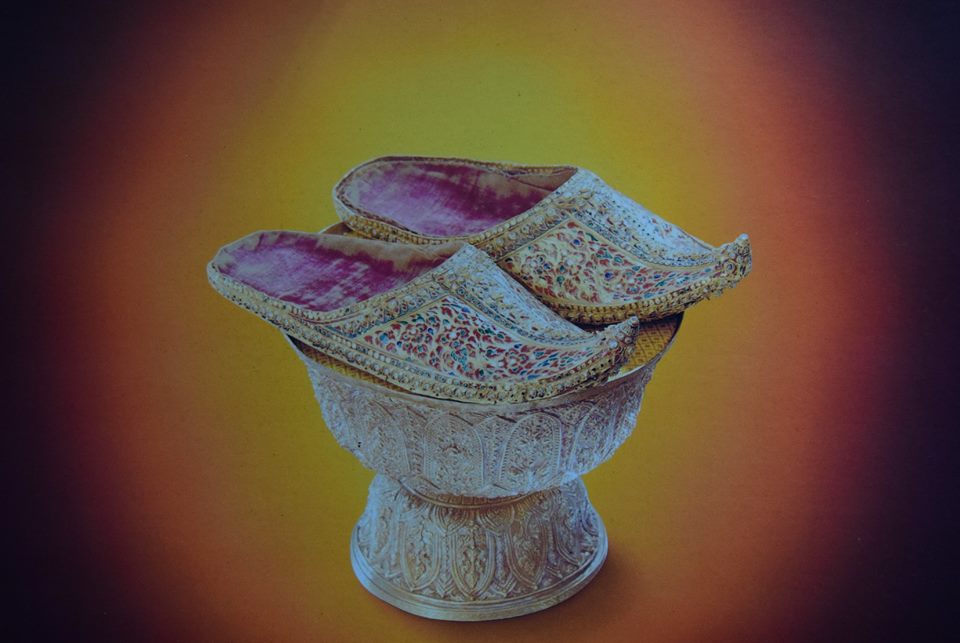
The Royal Slippers or “Chalong Phrabat Choeng Ngon”
King Rama, I ordered the making of a pair of gold slippers as a part of the Royal Regalia, following an ancient Indian belief. They were made of colorful enameled gold and inlaid with diamonds. During the Royal Coronation Ceremony, they are offered by the Chief Brahmin who puts them directly onto the feet of the King.
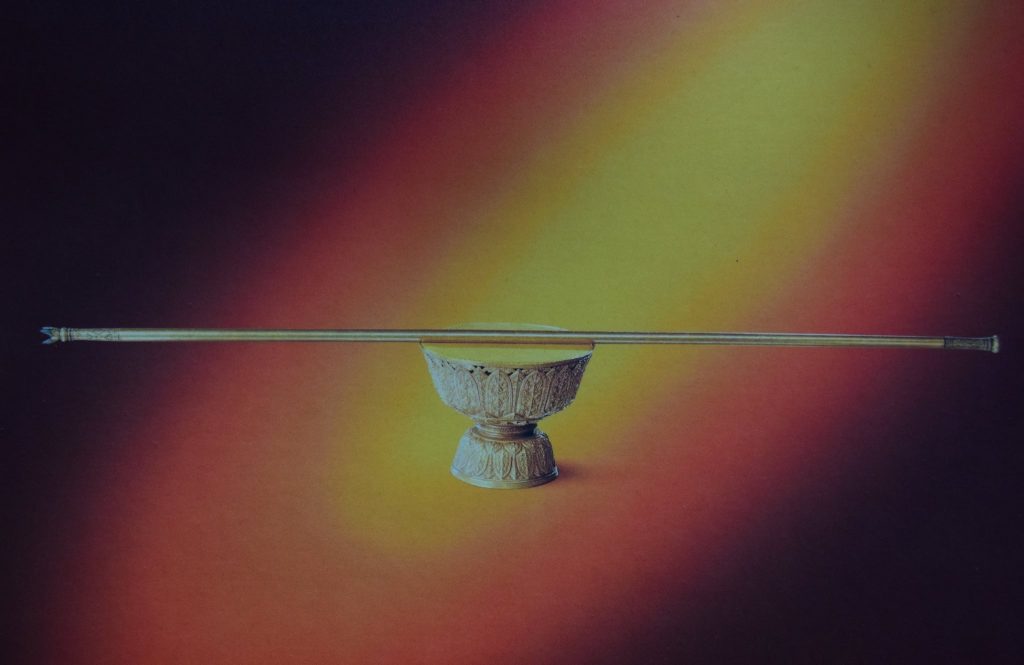
The Royal Scepter (Than Phra Khon)
The original scepter was made during the reign of His Majesty King Buddha Yod Fa Chulalok (Rama I). Originally made of Javanese Cassia wood, the staff was in the form of a trident and was gilded with gold, it’s iron hilt was inlaid with gold. It was named “Than Phra Kon,” but was originally named as “Than Phra Kon Ratchaphruek,” or “Royal Staff made of Javanese Cassia wood.”
In the reign of His Majesty King Mongkut (Rama IV), His Majesty ordered a new scepter to be made of pure gold. The staff was designed to hide a sword within and it had the figure of a deity on its tip. The scepter was called “Phra Saeng Sanao,” and also called “Than Phra Khon Thewarup” or “The Royal Staff with a Deity.” This scepter is more of a sword than a royal staff, and His Majesty preferred using this new scepter than the previous one.
However, His Majesty King Vajiravudh (Rama VI), due to his royal admiration of heritage objects, brought back the original scepter and was used again in the Royal Coronation Ceremony, hence then the “Than Phra Kon Thewarup” was not included in the ceremony.
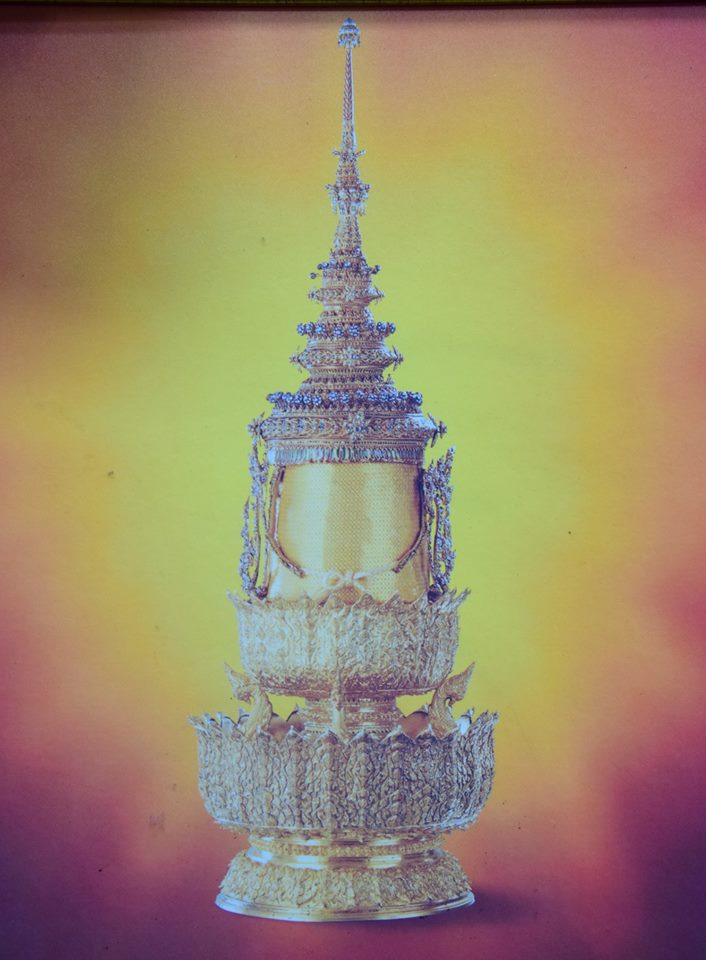
The Great Crown of Victory (Phra Maha Pichai Mongkut)
This royal accessory was made during the reign of King Rama I. Inlaid with gold and studded with nine precious gemstones, the biggest one is embedded on top named Maha Vichian Manee.
The Royal Crown means the crown of the dace in heaven where God Indra resides, and rules over the second heaven, Dao Dueng. In the ancient time, The Royal Crown was as significant as other regalia. Later, King Rama IV decided to follow the rule of the European Royal Household; a dignity of the king was recognized when he was wearing a crown. Since then, the Royal Crown has become the most important among all royal regalia.
Source:
Foreign Office, The Government Public Relations Department, Office of the Prime Minister

